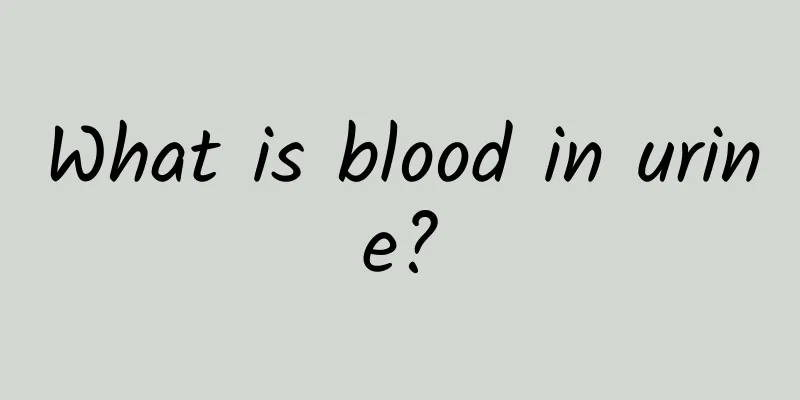How to treat acne? This is the correct way!

|
Acne is a very common skin disease, which is especially prone to occur in teenagers. Although it is not a serious disease, it can affect the appearance of young people and thus cause a great psychological burden. Some acne will heal on its own, but in many cases scientific methods are needed for treatment, and relevant daily care measures must also be taken. 1. Daily care Wash your face with warm water once or twice a day to clean your skin, and avoid squeezing or scratching skin lesions with your hands. Avoid using oily and powdery cosmetics and ointments and creams containing glucocorticoids. 2. Common methods of acne treatment (1) Topical medications: Retinoic acid (retinoic acid cream, adapalene gel, tazarotene gel), benzoyl peroxide, antibiotics (clindamycin, erythromycin, chloramphenicol, etc.), azelaic acid, sulfur lotion, etc. (2) The first choice of oral antibiotics is tetracycline (minocycline, doxycycline, etc.), followed by macrolides (erythromycin). Avoid antibiotics commonly used to treat systemic infections such as levofloxacin. The course of antibiotics is usually 6 to 12 weeks. (3) Oral isotretinoin For severe acne, oral isotretinoin is the standard treatment and currently the most effective method for treating acne. The treatment course aims to achieve a minimum cumulative dose of 60 mg/kg. (4) Anti-androgen therapy, such as the oral contraceptive cyproterone acetate combined tablets, is suitable for female patients with moderate to severe acne accompanied by symptoms of excessive androgen levels (such as hirsutism, seborrhea, etc.) or polycystic ovary syndrome. Female patients with delayed-onset acne and acne that is significantly aggravated before menstruation may also consider using oral contraceptives. (5) Oral glucocorticoids are mainly used for fulminant or aggregated acne, following the principles of short-term, low-dose, and combined with other methods. (6) For patients who cannot tolerate or are unwilling to receive drug treatment, physical therapy such as photodynamic therapy (PDT), fruit acid therapy, laser therapy, etc. can also be considered. 3. Grading of treatment for acne (1) Level 1 is generally treated locally, with topical retinoic acid preparations being the first choice. (2) Level 2: Combined use of topical retinoids and benzoyl peroxide or antibiotics, and oral antibiotics if necessary. (3) Grade 3 often requires combined treatment, with oral antibiotics combined with topical benzoyl peroxide and/or retinoic acid drugs as the first choice. Antiandrogen therapy may also be considered for female patients where indicated. (4) Grade 4 oral isotretinoin is the most effective treatment and can be used as first-line treatment. For patients with more inflammatory papules and pustules, systemic antibiotics combined with topical benzoyl peroxide can be used first, and then oral isotretinoin can be used for sequential treatment after the skin lesions have improved significantly. 4. Maintenance treatment of acne Regardless of the treatment method used, maintenance treatment should be continued after the skin lesions have significantly subsided. Topical retinoic acid drugs are the first choice, and maintenance treatment should be continued for 6 to 12 months. Benzoyl peroxide can be used in combination if necessary. |
>>: What medicine should I take for heat, cold and flu? Medical experts recommend these 5!
Recommend
Precautions for soaking ginseng slices in water
Ginseng slices are a very common health-care Chin...
What medicine should I take for a mild cerebral infarction?
As people become more familiar with cerebral infa...
Is acupuncture harmful to the body?
Nowadays, many people may suffer from diseases su...
What herbs should I use for bathing?
Body itching is often caused by skin diseases. If...
Why does the middle finger bone hurt?
Pain is a symptom, and bone pain is also a troubl...
Sudden menopause without pregnancy
A woman's health depends on whether she still...
The efficacy, effects and contraindications of Polygonum multiflorum
Polygonum multiflorum, also known as Polygonum mu...
Treatment methods for vulvar itching, Chinese medicine remedies to cure itching
Vulvar itching is a symptom that many women exper...
What are the examinations of digestive endoscopy?
With the improvement of the quality of life, the ...
Massage methods to make your breasts bigger
For women, they all like to have plump breasts, w...
Is it dangerous to have a fast heart rate when drinking alcohol?
The average person's heart beats 60-100 times...
Buttock bone pain
Although there is a lot of fat on the buttocks an...
How to treat lumbar fracture?
The lumbar vertebra is a part of the spine, and t...
Dull pain above left chest
If there is eye pain above the left chest, it may...
How is penile curvature surgery performed?
The penis is the most important part of men's...









